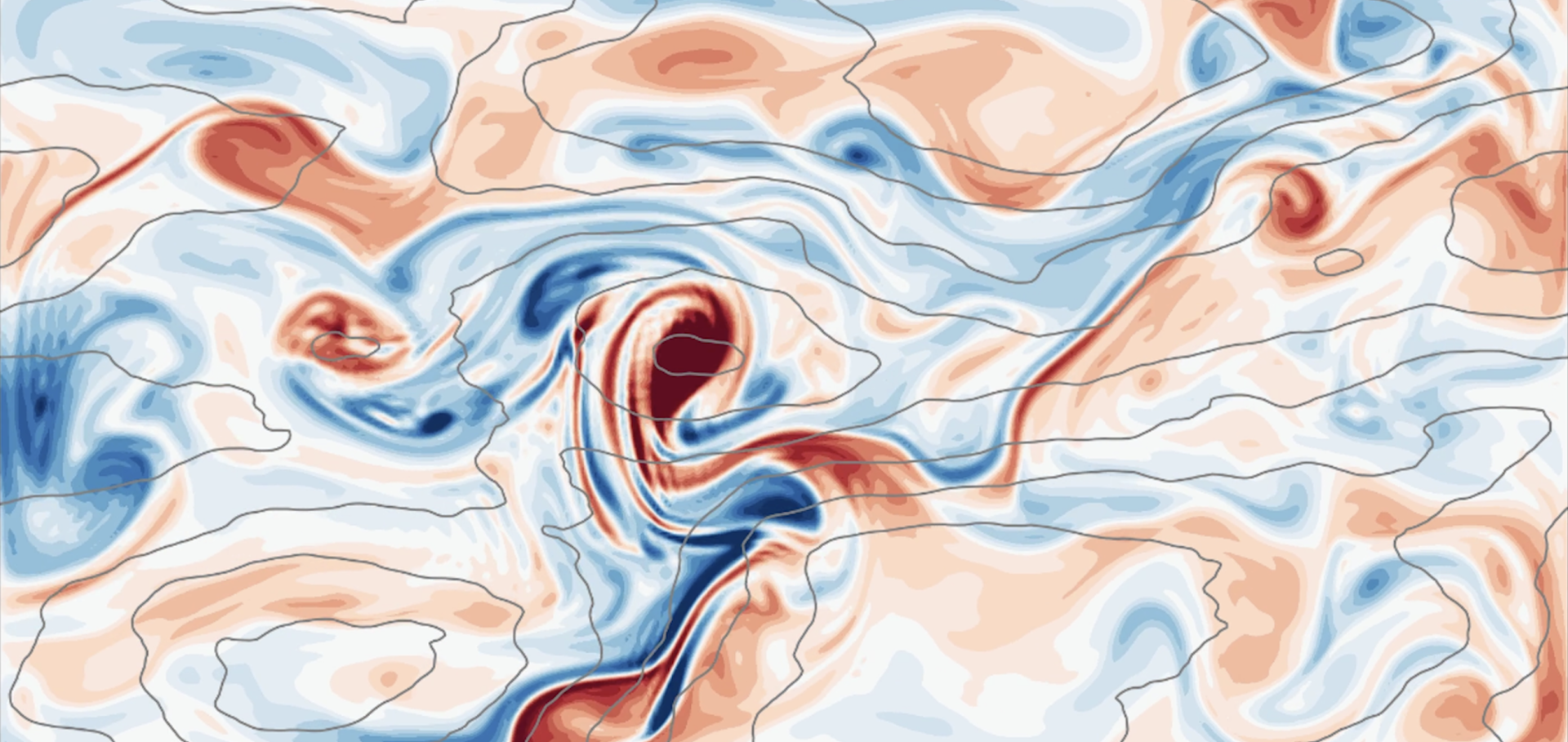An energy- and enstrophy-constrained parameterization of barotropic eddy potential vorticity fluxes
Abstract:
A parameterization for barotropic eddy potential vorticity (PV) fluxes is introduced which applies both an energetic and an enstrophetic constraint to a down-gradient PV mixing closure. An eddy kinetic energy budget and an eddy potential enstrophy budget are employed to constrain the parameterized eddy PV fluxes. Through the budgets, the parameterization facilitates a bidirectional exchange of kinetic energy between the parameterized eddies and the large-scale flow, and a conversion of potential enstrophy from the large-scale flow to the parameterized eddies. The parameterization is tested in simulations of barotropic, freely-decaying turbulence in a doubly periodic domain over variable bottom topography. The simulations show that employing the parameterization results in an upscale transfer of kinetic energy emerges on average, consistent with quasigeostrophic theory. Furthermore, the kinetic energy and potential enstrophy budgets employed are sufficient to constrain the large-scale flow in a realistic manner when compared to an eddy-resolving model. As a result, a topography-following flow of the correct magnitude emerges in a coarse-resolution model with parameterized eddy effects. Dissipation in the coarse-resolution simulations is significant, leading to the most significant source of discrepancy between the coarse resolution simulation with parameterized eddy effects and the eddy-resolving simulation. This work constitutes a first step towards the ultimate aim of parameterizing both baroclinic and barotropic turbulence. How this may be achieved by integrating this parameterization with other methods in more realistic ocean simulations is discussed.An energy and enstrophy constrained parameterization of barotropic eddy potential vorticity fluxes
An energy- and enstrophy-constrained parameterization of mesoscale ocean eddies over topography
Abstract:
Mesoscale ocean eddies have a profound influence on the large-scale oceanic flow, yet the effect of these eddies in driving rectified topography-following flows is often ignored in climate models. In this thesis, a new parameterization of barotropic eddy potential vorticity (PV) fluxes which is both energetically and enstrophetically constrained is developed for use in non-eddying models. The parameterization employs down-gradient PV mixing and incorporates a subgrid eddy kinetic energy and eddy potential enstrophy budget to constrain the parameterized PV mixing. The parameterization includes a mechanism through which kinetic energy can be exchanged bidirectionally between the resolved flow and the parameterized eddies, and a mechanism through which potential enstrophy can be converted from the resolved flow to the parameterized eddies.
The parameterization is tested in highly idealised simulations of barotropic freely decaying turbulence in a doubly periodic domain on an f-plane over variable topography. An emergent topography-following flow is produced by the parameterization. The constraints imposed in the parameterization are successful in constraining the resolved kinetic energy and potential enstrophy such that they are realistic when compared with an eddy-resolving model. The kinetic energy and potential enstrophy pathways associated with the parameterized and eddy-resolving models are quantified and compared. The parameterized transfer rates initially resemble those of the eddy-resolving simulation, but diverge from the eddy-resolving simulation when biharmonic diffusion dominates the flow.
The kinetic energy supercharger mechanism is introduced as a method of compensating for the erroneous kinetic energy and potential enstrophy transfers when biharmonic diffusion dominates the flow. The parameterization with the additional kinetic energy supercharger mechanism is tested in the setup described above, and produces kinetic energy and potential enstrophy transfers which more closely resemble those of the eddy-resolving simulation.
A method of implementing the parameterization of barotropic eddy PV fluxes in a baroclinic setup is outlined and referred to as GM+PV. The Gent and McWilliams (1990) parameterization is employed alongside the barotropic parameterization, and the two are integrated by the APE-to-EKE conversion mechanism which mimics the process of barotropization. GM+PV is implemented in the Massachusetts Institute of Technology general circulation model.
GM+PV is tested in semi-realistic simulations of the Arctic Ocean. An emergent cyclonic flow around the Arctic Basin at depth, broadly resembling the Arctic Circumpolar Boundary Current and not present in simulations without GM+PV, is produced. The kinetic energy pathways associated with GM+PV simulations are quantified and utilised to explain the maintenance of the quasi-steady state as well as the functioning of GM+PV in a baroclinic setup.

